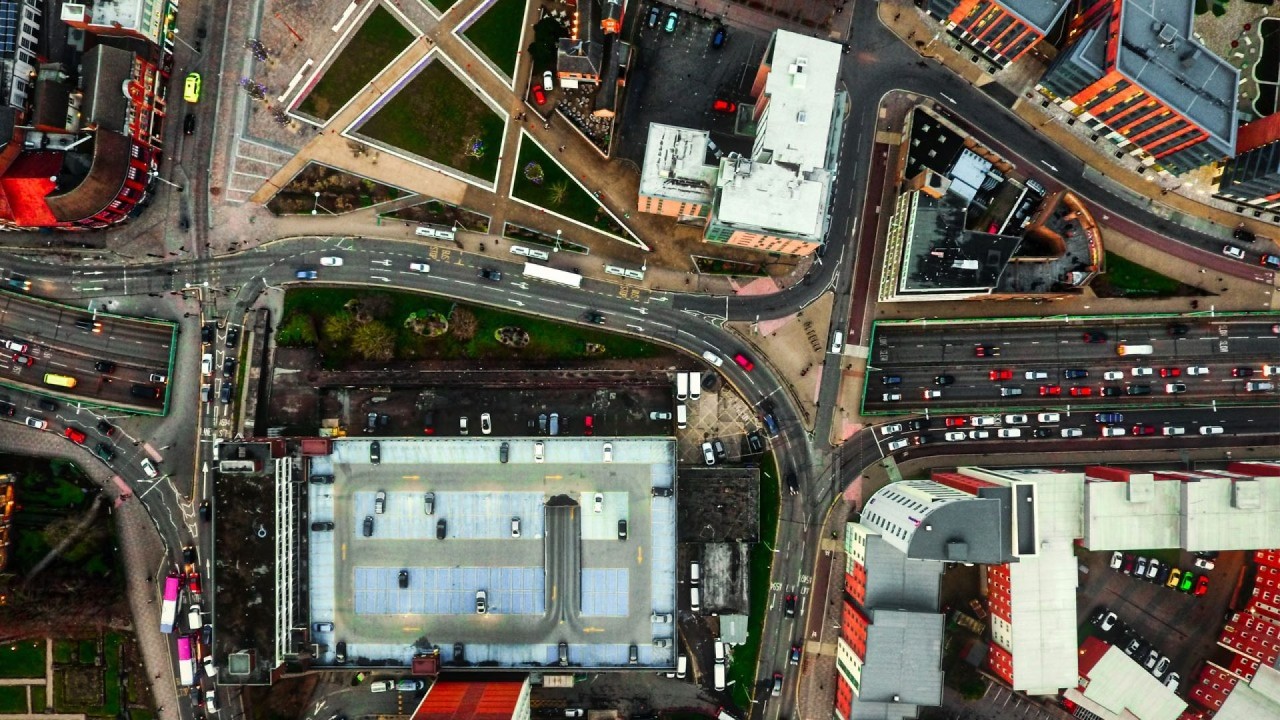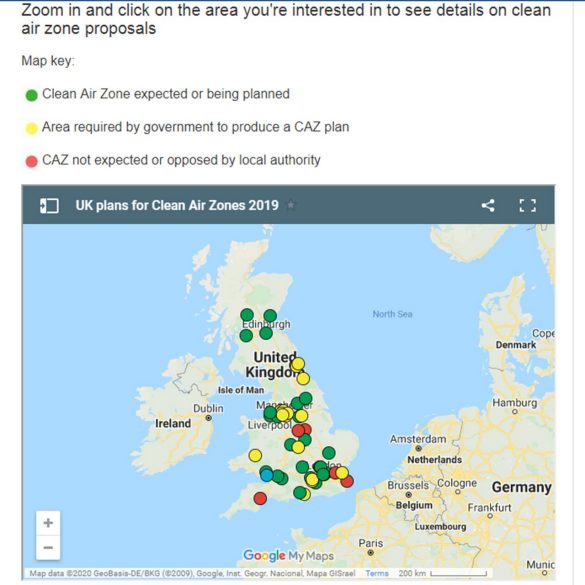
CLEAN AIR ZONES TO GET STRICTER IN LONDON AND AROUND THE UK
21st January 2021
Numerous cities will be implementing CAZ’s over the coming year to combat pollution levels in accordance with the government’s Clean Air Strategy.
2020 will be a year of adaptation to tougher emission standards as city councils attempt to lower urban pollution levels by introducing CAZ’s, otherwise known as Clean Air Zones.
Following the Government’s Clean Air Strategy, published in 2019, operators have been incentivised to adopt environmentally friendlier Euro VI fleets by offering a 10% reduction in the HGV Road User Levy.
Working in conjunction with this strategy, and the overarching Road to Zero goal of zero emission road transport, are the updates to London’s LEZ, and introduction of CAZ’s.
Last year we discussed the initial implementation of the Ultra Low emission zone in London. Replacing the T-charge, the zone charge penalises trucks not meeting the Euro VI standard with daily fines.
From 26th October 2020, London's Low Emission Zones (Greater London) will be getting stricter. HGV lorries over 3.5 tonnes not meeting Euro VI will have to pay a daily charge of £100, or a daily charge of £300 if not meeting Euro IV. Current LEZ emissions standards set a limit for how much particulate matter (PM) a vehicle may emit. The tougher standards will also set a limit for nitrogen oxides (NOx) for some vehicles. You can check whether your vehicle meets the updated LEZ standards here.

Cities around the UK are now following suit by implementing their own Clean Air Zones. These are areas where proactive measures are being taken to improve air quality. Currently, there are four classes of CAZ, of which Class B, C and D apply to HGV’s.
This map illustrates the current status of CAZ’s in the UK.
In 2020, we can expect to see new CAZ’s in England in the following locations:
Birmingham: Birmingham’s CAZ is expected to begin on 1st July, covering all roads within the A4540 Middleway Ring Road, but not the Middleway itself. HGVs, coaches and buses will have to pay a daily £50 charge to enter its Clean Air Zone. However, one year exemptions (until 2021) are eligible for commercial vehicles if they are registered in the zone, or travelling into the zone with an existing financial agreement. Update: the Birmingham CAZ has since been postponed, read more here.
Bath: Bath’s CAZ goes live in central Bath on 4th November. Higher emission buses, coaches and HGVs will be charged £100 per day to enter the zone.
Leeds: The initial introduction date has been pushed back (it was originally intended to begin in January). Upgrade / retrofit grants of up to £16,000 are expected to be made available to HGVs operators.
Oxford: Oxford is set to become a Zero Emission Zone (ZEZ) in 2020, charging all petrol and diesel vehicles that enter the city centre - there will be consultation over the course of the year to determine exact charges and hours of operation.
Further CAZ’s in locations such as Leicester, Bristol, Sheffield and Newcastle are in discussion and expected to come into enforcement in 2021.
There can be no doubt that minimising the polluting effects of vehicles is a priority for the transport industry. At Scania, investment and research into renewable, zero-emission fuels is at the forefront of operations.
Working with cutting edge technology that supports the shift to fossil free, ASKO and Scania celebrated four hydrogen powered fuel cell electric Scania trucks going on the road at the beginning of 2020. This pilot was truly one of the first of its kind.
HAVI Logistics has recently switched half of its eight-strong Finnish fleet to Scania biogas trucks. HAVI, which delivers food to McDonald’s and other restaurants, is committed to phasing out its fossil-fuel operations under a Europe-wide agreement it made in 2017 with Scania and McDonald’s.
And thanks to cross sector partnerships, in Chile with Ericsson most recently, experimental projects are happening right now that aim to speed up the reduction of greenhouse gas emissions. Using 4.5G technologies, the cab wall of one of Transportes Ricardo Concha’s fleet of Scania trucks has been fitted with a special monitoring device that records and transmits weather and position data, as well as measuring the level of pollutants in the atmosphere.
It is also important to recognise the progression that has already been achieved in the sector. As the FTA has asserted, today’s HGVs are cleaner than ever, with Euro VI vehicles demonstrably producing 80 per cent lower harmful exhaust emissions than their predecessors.
Moving over to a Euro VI compliant truck does not need to be an exhaustive or expensive process; at TruckEast we proudly offer a range of previously owned Euro VI vehicles. Alternatively, if you would prefer to purchase a new vehicle, our sales team can offer 1-1 guidance to meet your business’s requirements.
